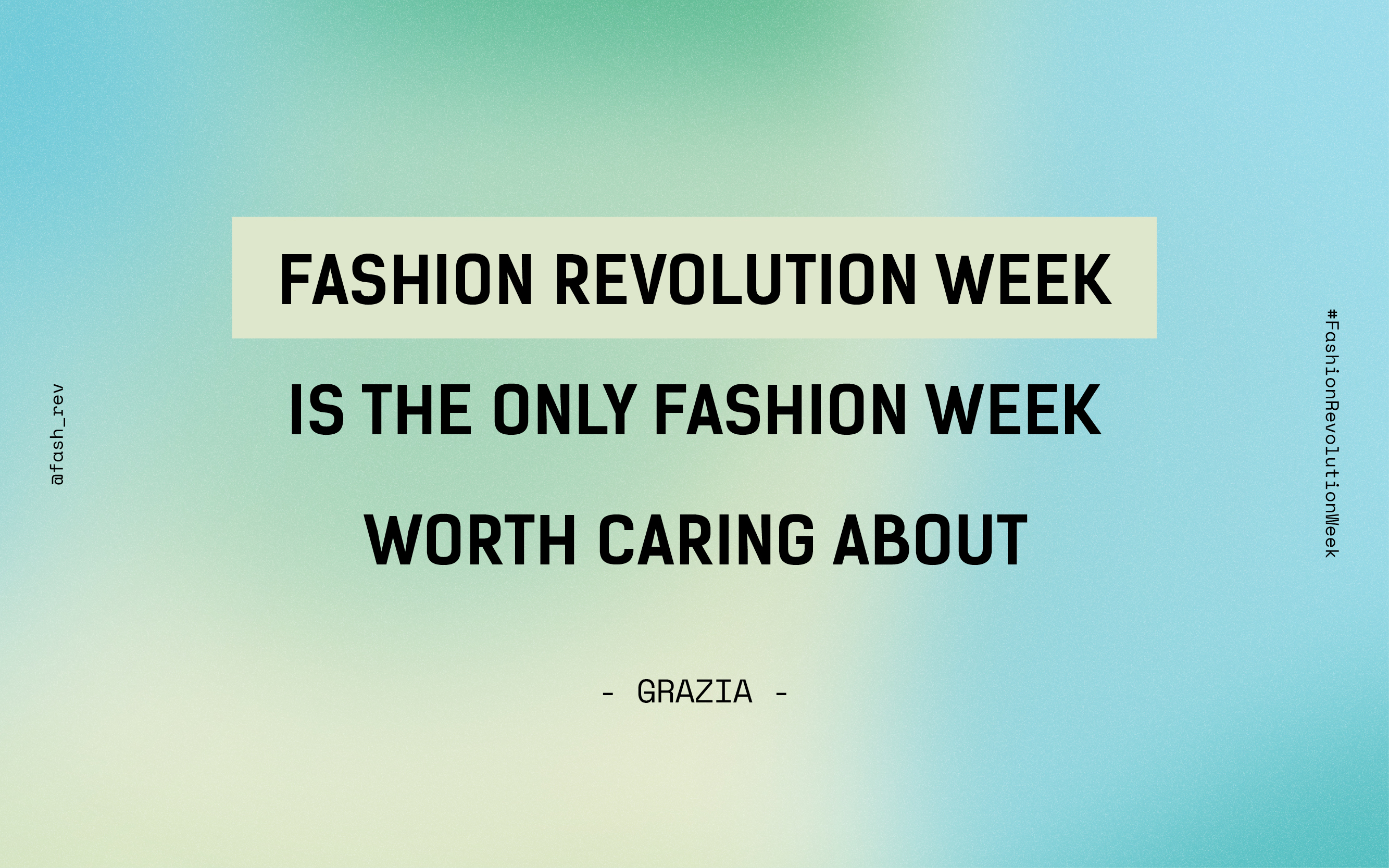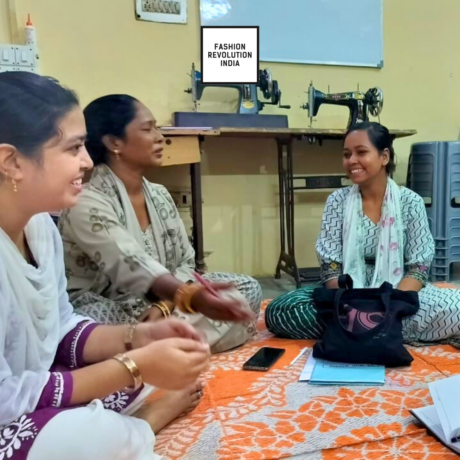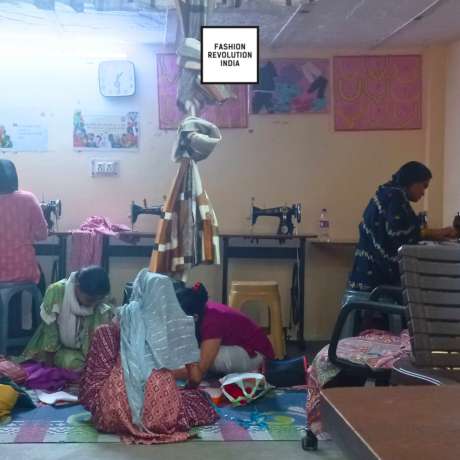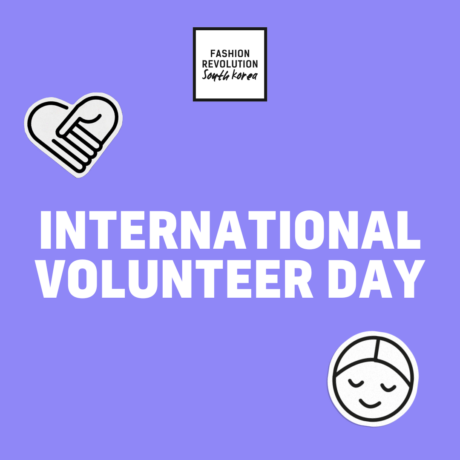Fashion Revolution Week 2021 Roundup
2021 was possibly our biggest Fashion Revolution Week ever! Despite the pandemic forcing most of our campaigning online for the second year running, our global community delivered incredible events and activations across the world and made a huge impact.
Fashion Revolution Week is the time when we come together as a global community to help create a better fashion industry. It centres around the anniversary of the Rana Plaza factory collapse, which killed around 1,138 people and injured many more on 24 April 2013. This year, as we marked 8 years since the tragedy, Fashion Revolution Week focused on the interconnectedness of human rights and the rights of nature. The campaign amplified unheard voices across the fashion supply chain and harnessed the creativity of our community to explore innovative and interconnected solutions.
We shared the stories of those affected by change, with those who are asking for change, to pressure those who need to change. In partnership with leading global organisations, we highlighted the urgent, radical need to shift the fashion industry from extractive and exploitative, to regenerative, equitable and accountable. Our conversations, webinars, stories and worker profiles came together to introduce a new dominant cultural narrative based on a just transition, where transparency, respecting human rights and dignity and conserving the environment becomes a driving force for the public and for the fashion industry.
Here, catch up on some of the week’s highlights and find out how to stay involved with our work, all year round.
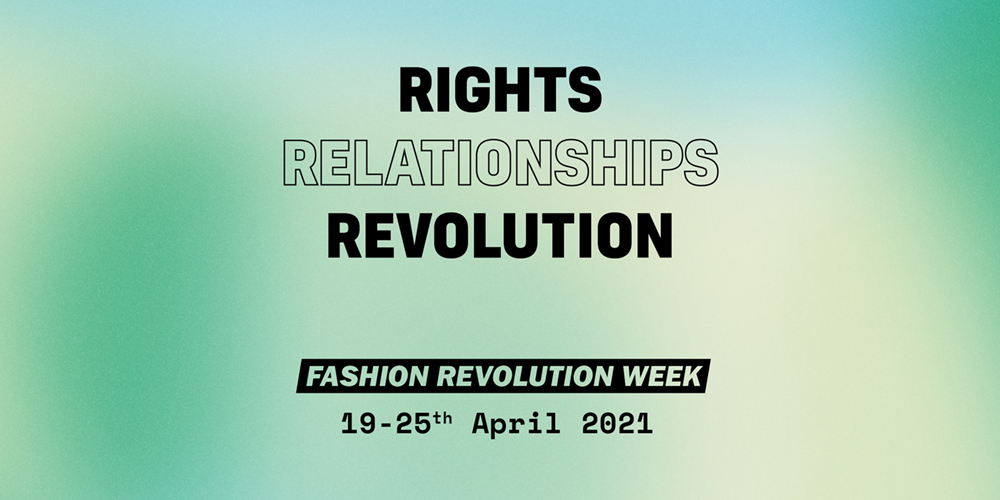
Rights, Relationships and Revolution
Our theme for Fashion Revolution Week 2021 was Rights, Relationships and Revolution, a battle cry for social and environmental justice in the fashion industry and beyond. This theme sparked hundreds of conversations about issues from cultural appropriation to waste colonialism, microplastic pollution to gender-based violence, and sparked creative solutions from policy and education to industry and culture.
Human rights and the rights of nature are interconnected and interdependent; we are part of the wider living world and our right to a healthy environment depends on the health of our planet. We cannot continue to extract dwindling resources from an already stressed natural world, pollute our land and our oceans, fall far short of climate change targets and dump our waste on the shoulders of countries we have culturally depleted. Nor can we continue to allow big business to profit whilst supply chain workers struggle to live in dignity.
At Fashion Revolution, we believe we need a radical shift in our relationships – our relationships with each other, with our clothes, within fashion supply chains and with the natural world. We need this revolution for our own prosperity and wellbeing, and for the health of our earth and our oceans. And it’s already starting to happen. Covid-19 has prompted growing numbers of people to reassess what’s meaningful in their lives. We have begun to reimagine the values at the essence of a new fashion system and explore new relationships with our clothing. Now we need brands to change their relationships with each other, replacing competition with collaboration to solve the major challenges facing the industry.
We need a shift in the relationships between brands and suppliers, so that the rights of people and the rights of nature hold more of the power wherever decisions are being made. And we need environmentalists, human rights groups, industry, governments, unions and citizens to work together to ensure that human rights and the rights of nature are addressed in unison. Collaboration and mutual support are essential, because we are more powerful voices for change when we all work together.

#WhoMadeMyFabric
Every year, we urge our community to use their power as global citizens to ask brands #WhoMadeMyClothes? and #WhatsInMyClothes?, but this year, we launched a new question: #WhoMadeMyFabric? in collaboration with grassroots organisations in Tamil Nadu, India’s largest textile production hub.
Fashion supply chains are notoriously opaque, and this can allow exploitative working conditions to thrive while obscuring who has the power to redress them. While a growing number of brands and retailers have published a list of the factories where their garments are cut and sewn, the vast majority are not yet telling us where fabrics and yarns are made. This leaves a huge blind spot for potential human rights and environmental risks.
When you start to look further down the supply chain, where fabrics are knitted or woven, textiles are treated and laundered, yarns are spun and dyed, fibres are sorted and processed and raw materials are grown and picked; there remains a widespread lack of transparency. We need brands to take responsibility for their entire global supply chain, including processing facilities and textile mills.
We called on citizens everywhere to demand greater transparency from brands by asking #WhoMadeMyFabric. Thousands of you helped us call on more than 60 major fashion retailers to publicly disclose the processing facilities and textile mills in their global supply chains by emailing brands directly, sharing posters and graphics on social media and leaving product reviews of brand websites.
Our global network of producers and trade unions also shared content about themselves and their work with the hashtag #IMadeYourFabric, because stories are just as important as stats. Remember, fashion isn’t just made by designers and brands, or even garment workers in the first tier of the global fashion supply chain. Fashion is made by farmers, pickers, weavers, dyers, spinners, printers, knitters, tanners, finishers and more.
But the campaign is not over – we’re continuing to push for greater transparency to enable us to identify, report and redress the human rights and environmental abuses throughout the fashion system, and for consumers to make informed decisions about the brands they buy from. Find out more and get involved.
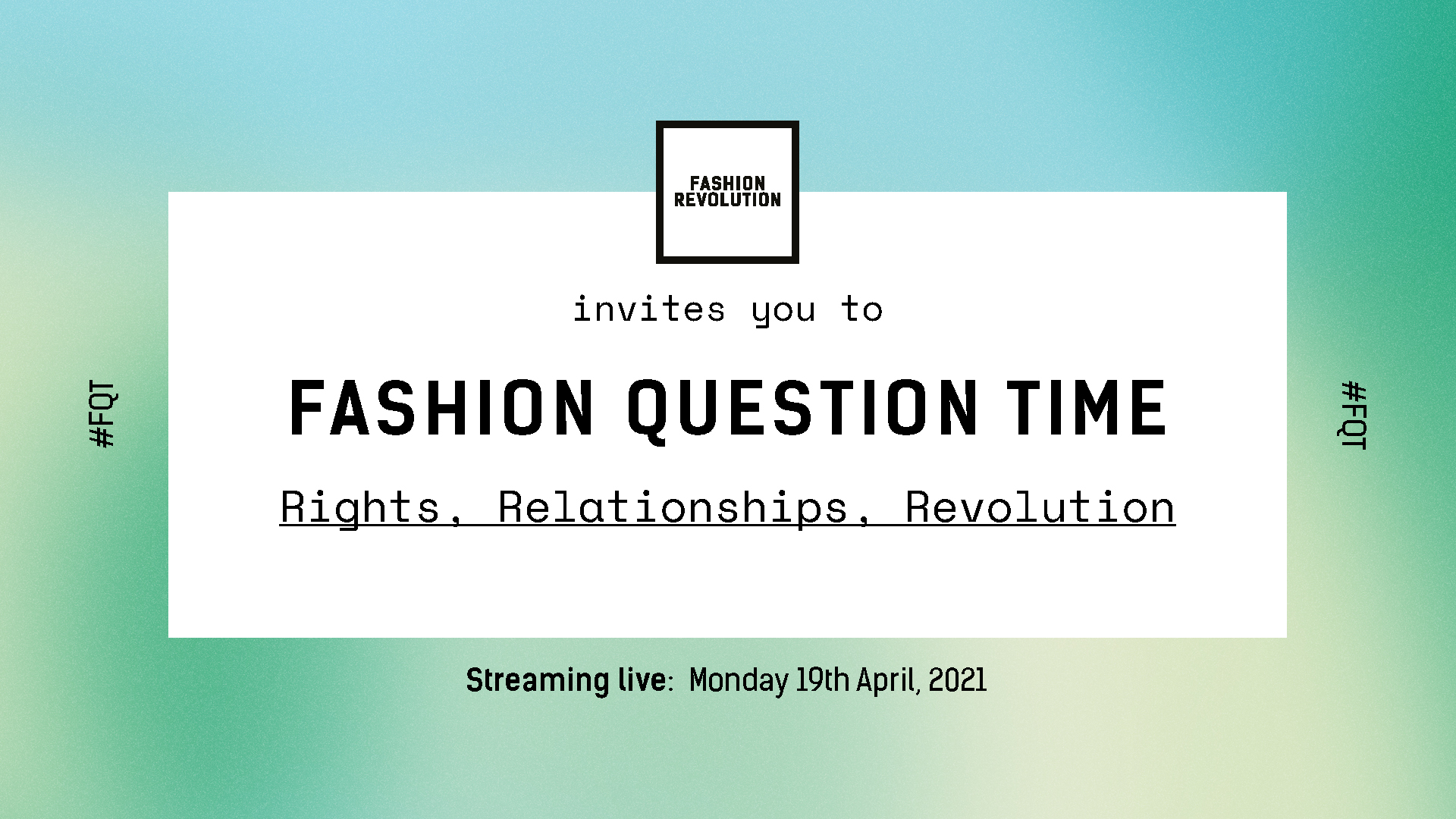
Event highlights
Our virtual events this year shone a spotlight on some of the most pressing issues affecting people and the planet, bringing together leading experts in our movement alongside unheard voices from across the fashion system. Make sure to catch up on…
- Fashion Question Time: Rights, Relationships and Revolution, our roundtable Q&A on the future of the fashion industry, with Lola Young, Nazma Akter, Sunny Dolat, Nicole Rycroft and Lara Wolters.
- Can Social Enterprise Revolutionise Fashion?, an Instagram Live with World Fair Trade Organisation featuring Christine Gent, Erinch Sahan, Selyna Peiris, Aude Vergne and Caterina Occhio.
- Forest Rights are Human Rights, a conversation about forests and fashion with Canopy Founder Nicole Rycroft, Indonesian activist Woro Supartinah and Fashion Revolution Brazil director Fernanda Simon.
- Unwoven: Phasing Plastic Out of Fashion, a panel discussion about fashion’s toxic relationship with plastic featuring Lauren Ritchie, Maxine Bédat, Imari Walker Karega and Tahirah Hairston.
- Cultural Intellectual Property Rights and the Rights of Nature, a presentation on how Indigenous communities combat cultural appropriation and conserve biodiversity with Monica Boța-Moisin, Rebecka Fosgren, Tara Gujadhur and Rituraj Dewan.
- Around the World of Fashion Revolution, an Instagram Live hosted by Emma Slade Edmonson featuring representatives from our Global Network including Sudan, Kazakhstan, Egypt, Mexico, Thailand, Portugal and the USA.
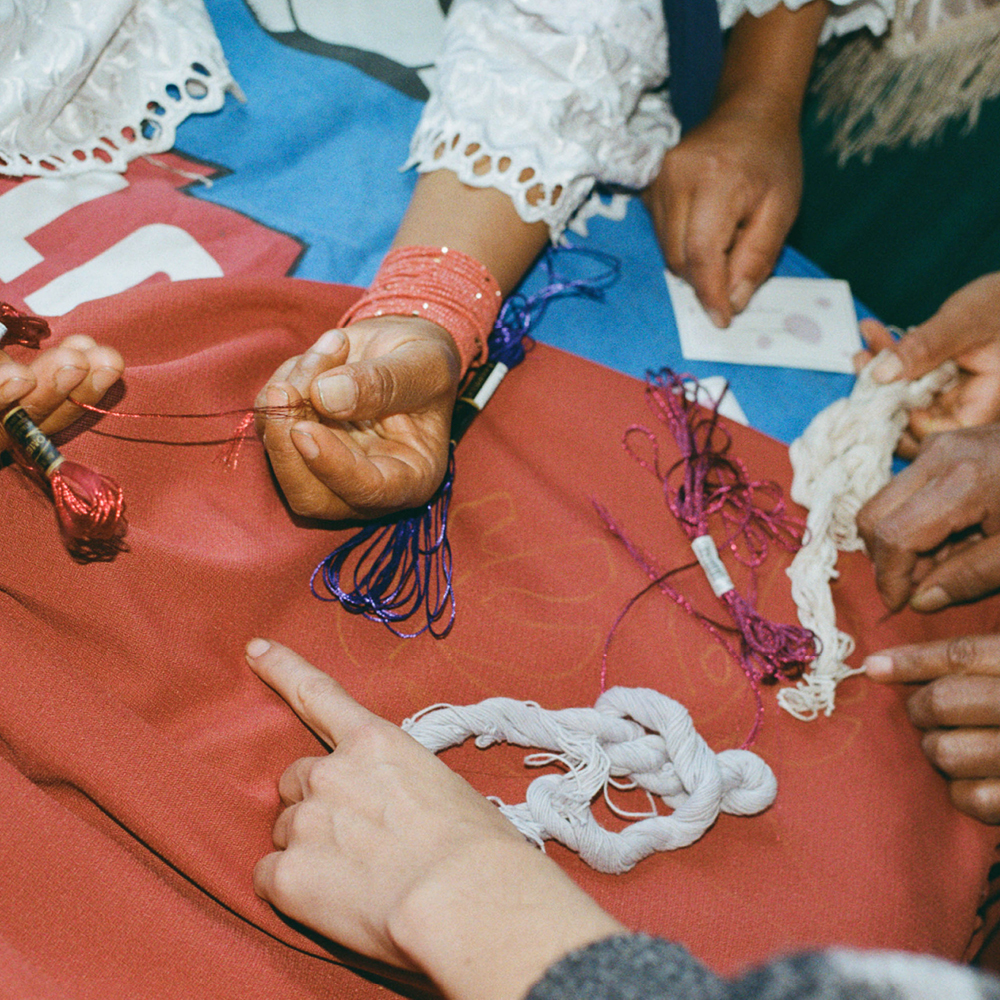
Fashion Open Studio
Over at our designer showcasing and mentoring initiative Fashion Open Studio, dozens of emerging and established international designers opened up their studios and their practice, proving what our Fashion Revolution manifesto looks like in reality.
Highlights include A2ByMatin’s ‘Punk Islam’ which bridges the textile heritage between Italy and Iran, solutions for zero waste creation by Yefikir in Addis Ababa, the preservation of artisanal practices with BLOKE in Lagos, and a short history of hemp with Mohsin Sajid.
We also learned from About a Worker, a radical design studio based in Paris giving workers from around the world the opportunity to become designers and Oshadi Studio in Erode, India, exploring their collaboration with Christy Dawn for regenerative cotton.
Kampala based IGC Fashion and London-based NUBA discussed their use of barkcloth, Modern Synthesis showcased their innovative biofabrication experiments, and Raeburn demonstrated how circularity works within their practice.
British designer Olivia Rubens taught us how to finger knit and repair or repurpose our knitwear, while we enjoyed a guided workshop showing madder dye and shibori patterns from Bangladeshi designer Rahemur Rahman and sustainable brand Aranya.
You can catch up on the full fashion Open Studio programme on YouTube and connect on Instagram.
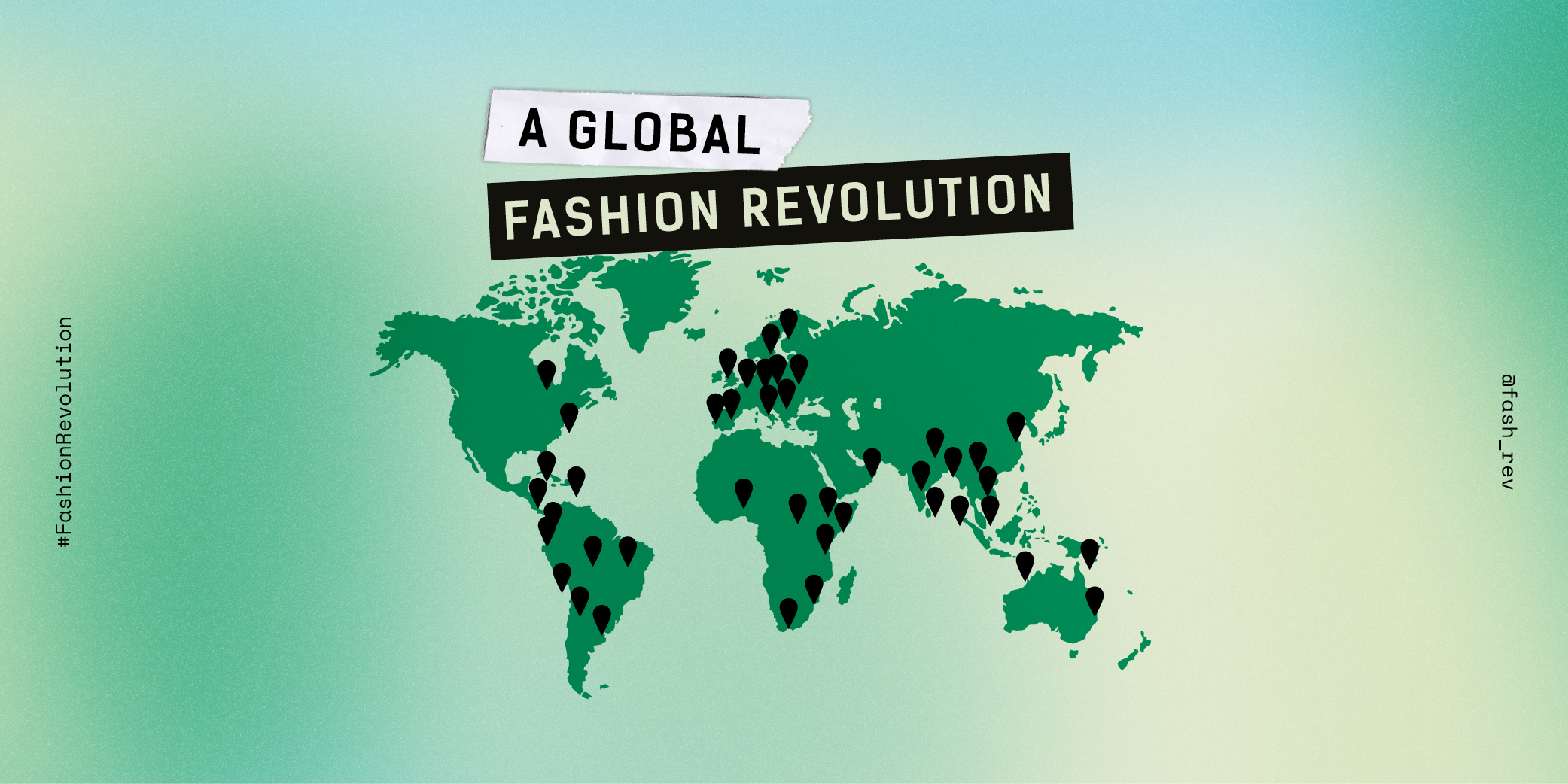
Global Network
With 90+ teams all around the world, Fashion Revolution Week was a truly international movement. Here are just a small selection of highlights from our local country teams:
- Fashion Revolution Singapore hosted a talk on waste and colonialism
- Fashion Revolution Zimbabwe hosted a Stitch & Bitch event focusing on mental health and fashion
- Fashion Revolution Ethiopia hosted a weekend of talks, workshops and film screenings in Addis Ababa
- Fashion Revolution Cambodia hosted a conversation with factory managers from the garment industry
- Fashion Revolution Argentina created an encyclopaedia of fashion with Appropropedia
- Fashion Revolution India hosted a workshop on refashioning waste through braiding
- Fashion Revolution Nepal hosted a talk on how the pandemic has affected local businesses in Kathmandu
- Fashion Revolution Denmark hosted a Who Made My Clothes? webinar
- Fashion Revolution Paraguay hosted a conversation on traditional craft and cultural appropriation
- Fashion Revolution Scotland hosted a Right to Repair mending series
- Fashion Revolution Malaysia hosted a panel on the art of Batik
- Fashion Revolution France launched a Guerrilla Poster campaign
- Fashion Revolution Ukraine launched BUYLESS, an artist collaboration with secondhand clothes
- Fashion Revolution Italy hosted ARTIVISM, an online exhibition of art on the theme of ‘Rights Relationships and Revolution’
- Fashion Revolution USA hosted a Fashion Question Time event on the SB62 Garment Worker Bill in LA
- Fashion Revolution Egypt launched a series of discussions with fashion influencers and stylists
- Fashion Revolution Sudan hosted an event on the circularity of upcycling
- Fashion Revolution Ireland teamed up with Nuw to host a virtual clothes swap event
- Fashion Revolution Nigeria collaborated with Lagos Fashion Week’s Woven Threads programme
- Fashion Revolution Zambia hosted a discussion on sustainability in the Zambian fashion industry
- Fashion Revolution Chile hosted a talk on the relationships we establish with indigenous communities
- Fashion Revolution Portugal hosted a discussion on greenwashing and how to spot it
- Fashion Revolution UAE hosted an event unpacking the relationship between fashion and our oceans
- Fashion Revolution South Africa hosted a panel discussion on growing and greening South Africa’s fashion industry
We’re also seeing brand new country teams rising up from this year’s Fashion Revolution Week, from Cuba to China. You can explore all our country teams and get involved in the Global Network here, and catch up on a selection of virtual events here.
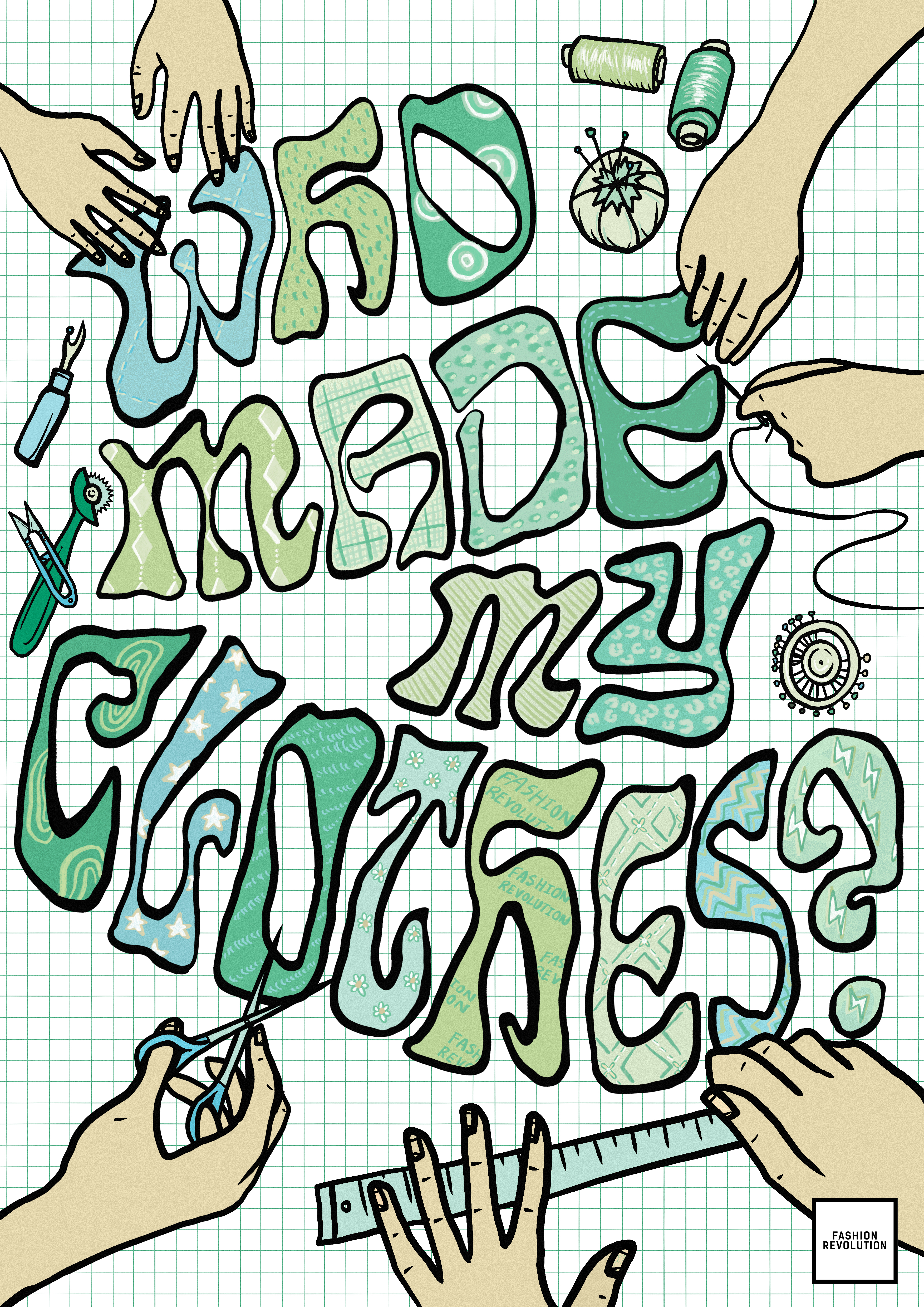
Poster campaign
“The role of the artist is to make the revolution irresistible.” – Toni Cade Bambara
Creativity has always been the core part of our movement, and this year we wanted to collaborate with some brilliant international artists to develop fresh new takes on our iconic #FashionRevolutionWeek posters, including @kissi_ussuki, @jada_art, @bugclubsupreme and @jungeun__lee.
In 2020, people went into lockdowns around the world and used the windows of their homes to share messages of inspiration and support for their neighbourhoods along with messages of politics and protest. To help make a statement and start conversations beyond social media, we encouraged you to print our or make your own Fashion Revolution posters and stick them in your window for some at-home activism.
You can continue to access the free artist-commissioned posters here.
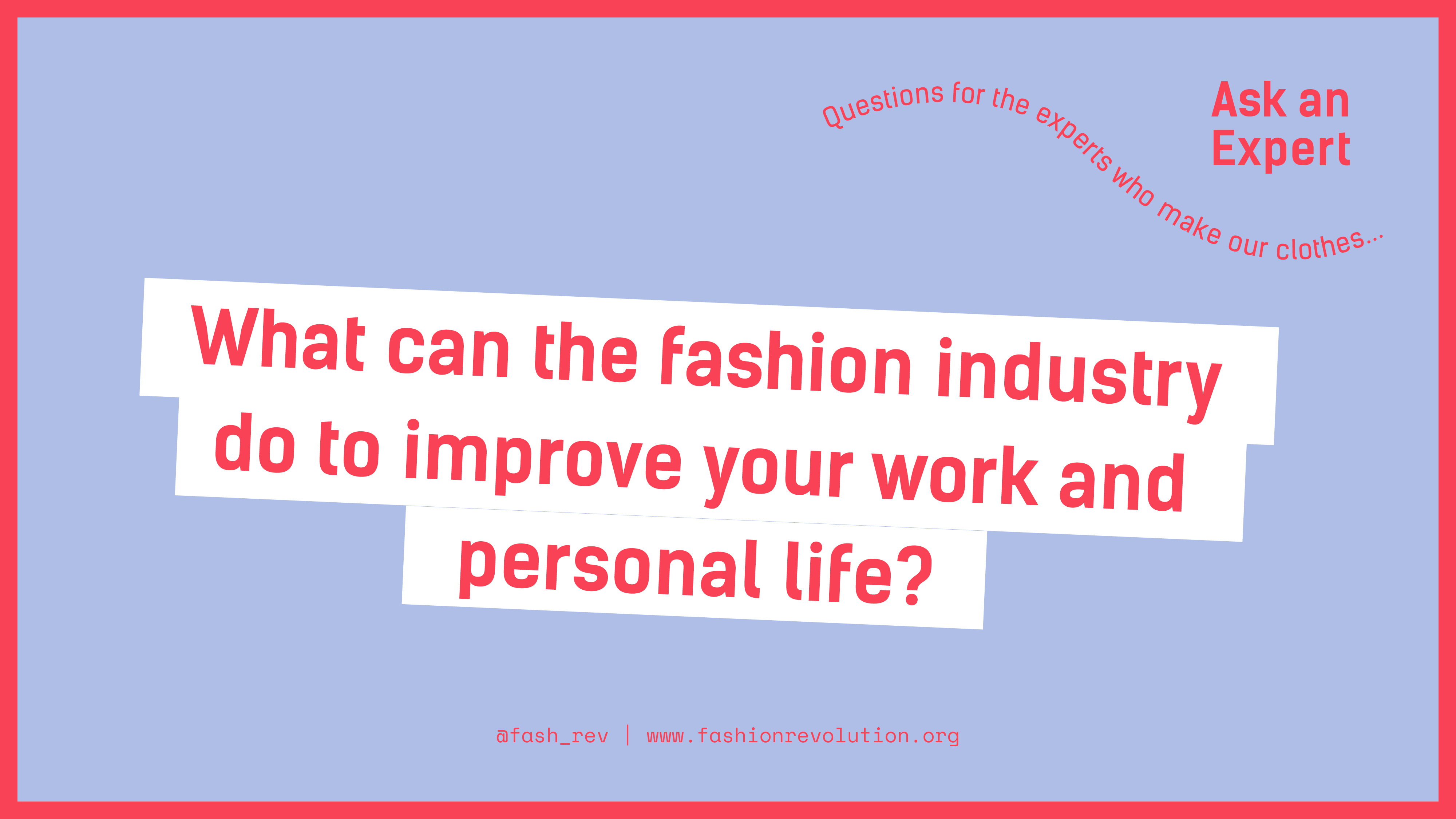
#IMadeYourClothes
In partnership with the World Fair Trade Organisation, we wanted to go beyond the #IMadeYourClothes hashtag and translate our resources into dozens of additional languages for producers around the world, and share some brilliant videos we produced with Fair Trade fashion enterprises.
These interviews showcase people working in the global fashion supply chain for Fair Trade enterprises, a business model that pours profits back into the wellbeing of the local community. Celebrating the real joy in their work, these small social enterprises showcased the women who make their clothes in this IGTV takeover. Catch up all three short videos in the series, including Dipali Pramanik from Sasha in India, Maria del Pilar Marcapiña from Peruland in Peru, and Kopila, Urmila, Sarita and Nirmala from Purnaa in Nepal.
- What was your childhood dream job?
- What could the industry do to improve your work/personal life?
- If you were given the power to make positive changes in the garment industry, what would you do?
- What is the most important thing to you right now?
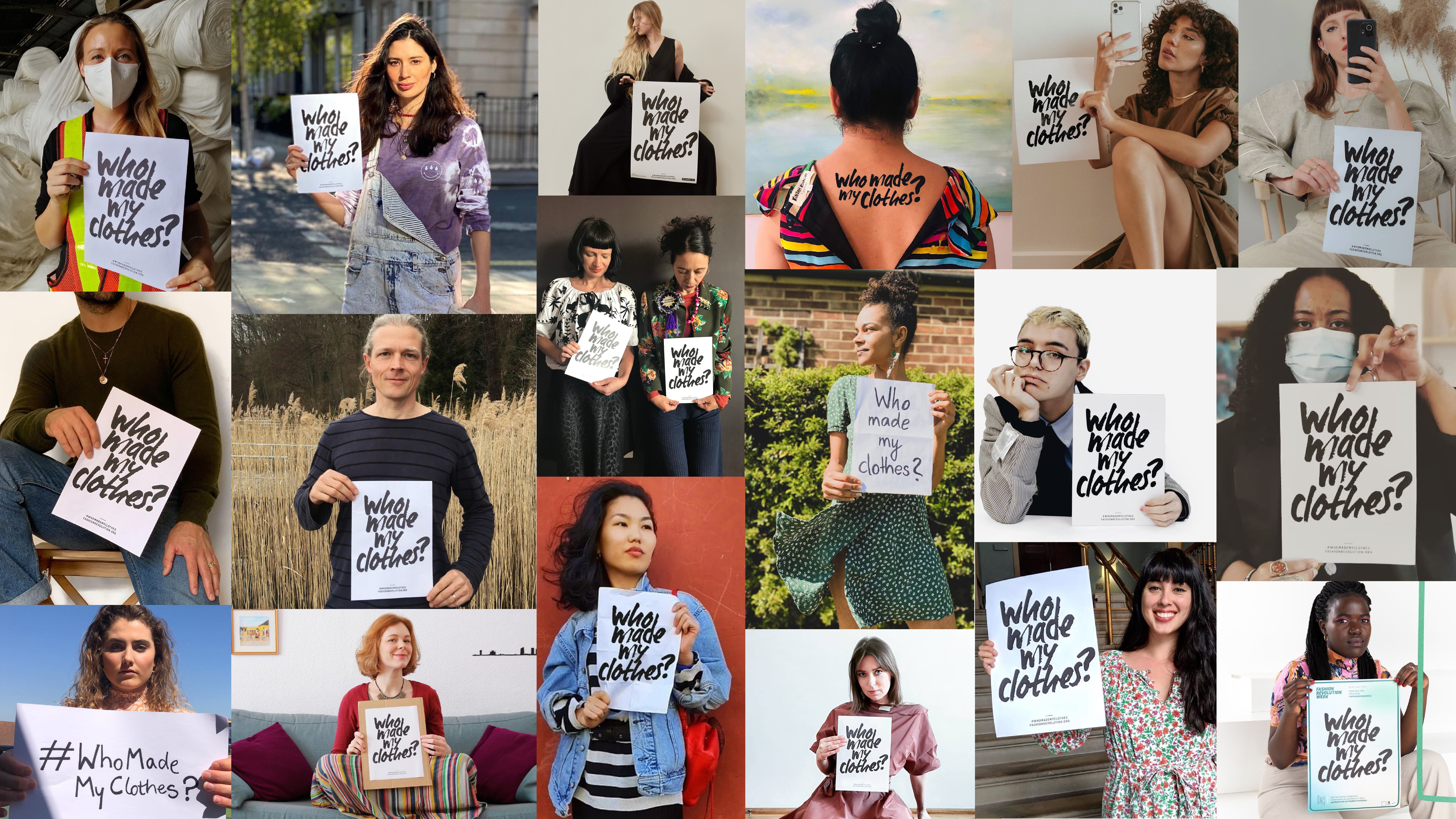
You are Fashion Revolution
The best part of Fashion Revolution Week is always seeing the incredible social media content shared from you, our community. Throughout the week, thousands of you asked fashion brands #WhoMadeMyClothes? #WhoMadeMyFabric? and #WhatsInMyClothes? to hold them accountable for their impact on people and the planet and push for greater transparency throughout the supply chain. We also saw brands and manufacturers sharing their stories with #IMadeYourClothes and #IMadeYourFabric to help us bridge the gap between consumers and producers.
Remember, Fashion Revolution is 365 days a year, so we encourage you to get involved all year round – you can download the posters here.
If you learned something during Fashion Revolution Week 2021, please consider donating to us. Your donations help us to:
• Conduct vital research on transparency, consumption, conditions and more that shakes up the industry from the inside out.
• Liaise directly with powerful policymakers to help uphold human rights throughout the fashion supply chain.
• Help our teams in 90+ countries around the world to facilitate meaningful local community action through financial and operational support.
• Directly support our network of partner organisations to make a difference in the lives of the people that make our clothes.
• Create free, open-source resources, events, tools and educational content to turn as many people as possible into fashion revolutionaries.
From all of us in the Fashion Revolution team, thank you for all your support and participation. Every single voice makes a difference in our fight for a fashion industry that conserves and restores the environment and values people over growth and profit.
DONATE TO FASHION REVOLUTION
